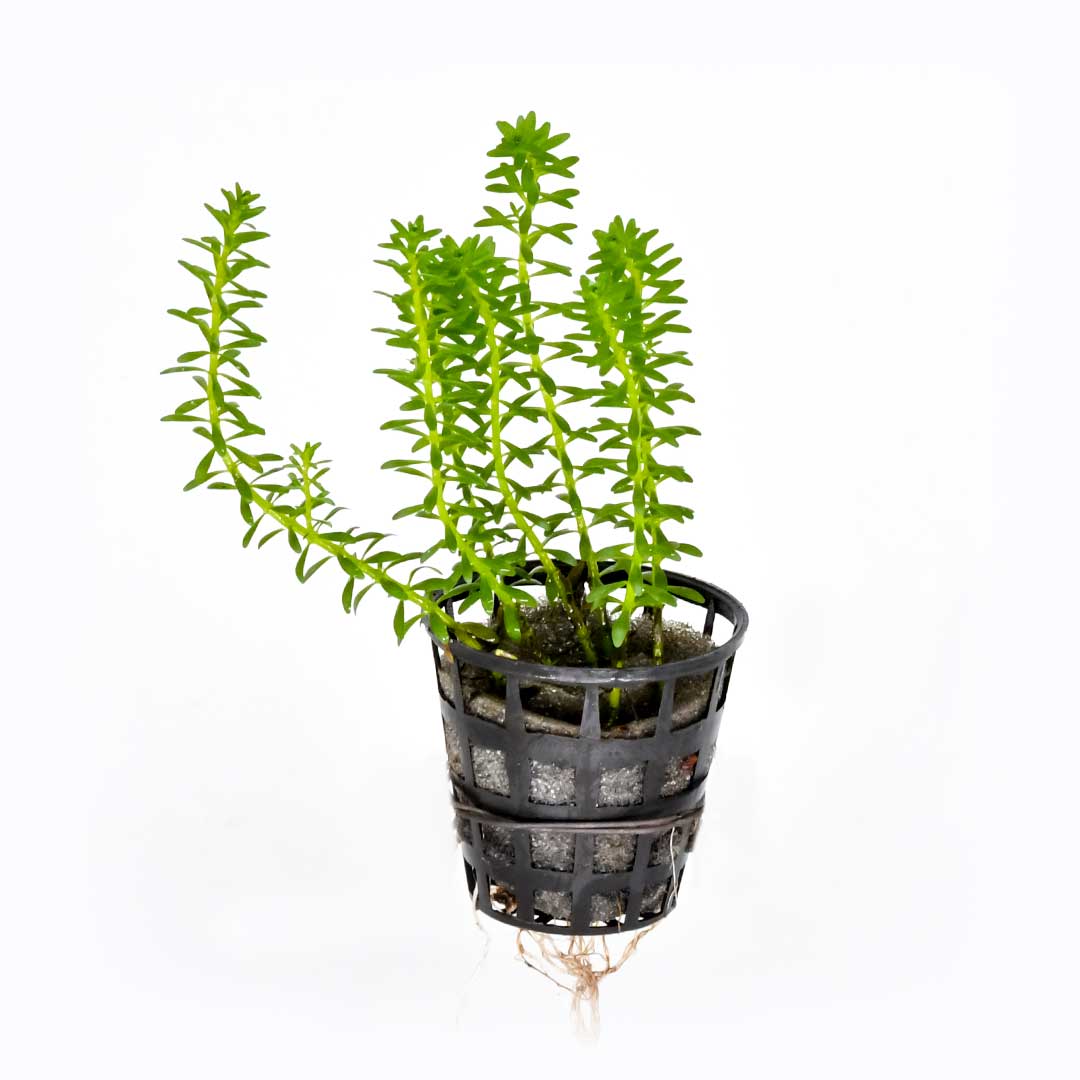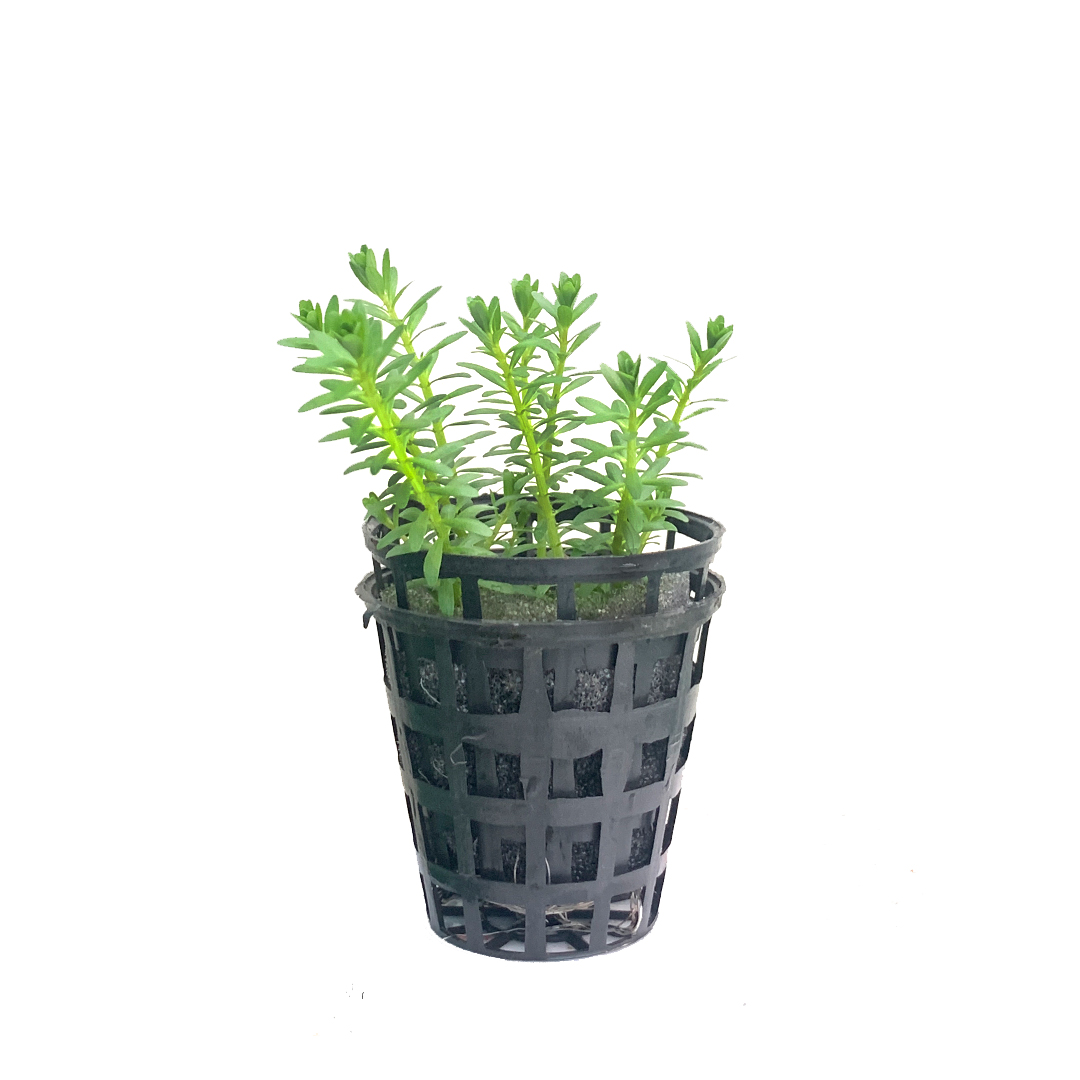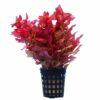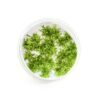The hybrid Rotala nanjenshan is a cross between Rotala Rotundifolia and Rotala Wallichi. It prefers softer acidic water and requires a lot of light and CO2. Rotala has delicate leaves! Take care when handling. Rotala sp. “Nanjenshan” is a bushy plant with fine-leaved leaves. It is native to Taiwan, where it has only been discovered in one location near the town of Nanjenshan. It looks a lot like Rotala wallichii with its millimetre-thick lineal leaves, but unlike the latter, it is light green with reddish shoot tips. Horizontal to overhanging lateral shoots will form in areas with lots of light. It was incorrectly labelled “Mayaca sellowiana,” despite having no relation to this Mayaca species. It may resemble it, but it is not related. When conditions are favourable, the plant can grow into a large bush. Trimming can greatly improve the bushy growth habit. “Nanjenshan” Rotala sp. grows best in relatively bright light and with the addition of CO2.
Rotala nanjenshan is a delicate fine-leaved plant native to Taiwan that has only been discovered in one location near Nanjenshan. Dennerle first used it in 1993. This Rotala’s species affiliation has yet to be determined because it has never been known to fruit. Fruit, on the other hand, is essential for distinguishing Rotala species. According to APC’s Plant Finder, it could be a natural hybrid of Rotala rotundifolia and R. wallichii; however, both of these species are found on Taiwan island.
R. sp. “Nanjenshan” is well-known in aquaristics and is easily obtained in trade. The location’s name is frequently misspelt (“Nanjean”, “Najean”).
This Rotala was originally introduced under the incorrect name “Mayaca sellowiana,” which is why many people mistake it for R. sp. “Nanjenshan.” This is incorrect, as true Mayaca sellowiana, while similar in appearance, is a completely different plant species that has nothing to do with the Rotala genus.
Rotala nanjenshan has submerged very narrow-lineal leaves that grow in whorls and are light green to reddish in colour. They can reach lengths of 1.5-2 cm and widths of 0.5-1 mm. The number of leaves per node ranges between 3 and 6. Like many other fine-leaved Rotala species, the leaf tips are truncate and sometimes have two points. The stem is bright green.
The emersed form of R. sp. “Nanjeanshan” moves slowly. Some of the stems also grow upwards, and each node has 2 to 4 leaves. The emersed leaves are elliptic to lanceolate, 0.5 to 1 cm long, and 2 to 4 mm wide, with a very short stalk. In their leaf axils, emersed plants may produce small flowers with 1 mm light purple petals.
Rotala nanjenshan prefers soft, CO2-rich water, similar to R. wallichii, which is a little more difficult to cultivate. Unhindered light and plenty of iron are required for the shoot tips to turn an intense reddish colour. To avoid stunted growth and blackening, consistent, well-planned fertilisation is essential. The plant has some requirements, but it is not particularly difficult to cultivate.
Growing shoot tips can sometimes develop an overhanging habit, which is an interesting design feature. A large group behind some Cryptocorynes or hardscape is a lovely sight. Groups may be trimmed back to promote more compact growth. A large number of lateral shoots will then form.
Rotala sp. “Nanjenshan” is an excellent choice for small tanks.
Is CO2 required at Rotala Nanjenshan?
The hybrid Rotala Nanjenshan is a cross between Rotala Rotundifolia and Rotala Wallichi. It prefers softer acidic water and requires a lot of light and CO2. Rotala has delicate leaves!
How do you cultivate Rotala Nanjenshan?
Rotala Nanjenshan thrives in aquariums with a warm water temperature of 76 to 82 degrees and a light output of 3 to 5 watts per gallon. Full spectrum lighting in the 5700 to 7000 kelvin range promotes plant coloration and growth.
Is CO2 required for Rotala orange juice?
Rotala Rotundifolia Orange Juice provides a striking contrast to green aquatic plant species whether grown submerged or emersed. This aquatic stem plant, like all red, pink, and orange plants, thrives in conditions of high lighting, CO2, and fertilisation dosing.










